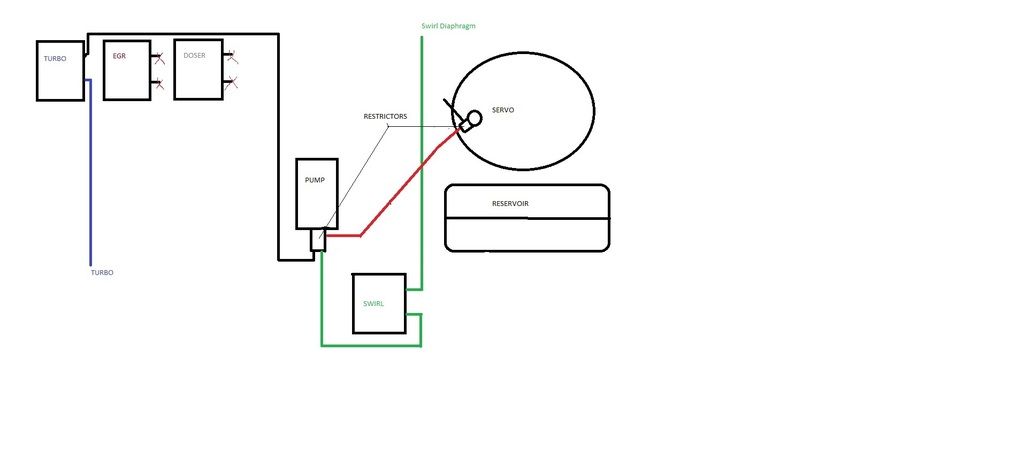Nice artwork Ben!

At the moment the wastegate on your turbo is connected directly to a vacuum supply, holding the wastegate open at all times.
Indeed, the photo seems to show that the wastegate is constantly on vacuum. However, I think this will keep the wastegate
closed instead of open, at all times. So then, instead, the turbo is always being spooled up to its max. At low revs that is not much. But at cruising speed and higher, there is a fairly high boost pressure. I will result in a bit lower fuel economy, and a turbo that wears faster.
NOTE: Make sure you leave all 3 EV's with their electrical connector plugged IN
My experience with an EGR solenoid plugged in electrically, but the vacuum line plugged off: the engine management computer (ECU) does not see that the EGR solenoid is not connected, so it tries to operate it. I could see this in the PP2000 while driving.
As a result, more fresh air is entering than the ECU thinks it should, since in fact the EGR is not recycling any air; all air inlet is fresh and that is measured by the mass air flow (MAF) sensor. The ECU sees this and flags a diagnostic trouble code (DTC) indicating "more air inlet than expected" or so. The DTC does not lead to any indication on the dashboard or message on the display.
When I disconnected also the electrical plugs, the ECU "knows" that the EGR solenoid is not connected and will not try to operate it. I could see this in the PP2000 while driving: EGR level went down to 0%. This will flag a different error, something like: "EGR solenoid not connected". But the measured air flow by the MAF is correct and the ECU will be able to give a smoke-free drive. And here too, the DTC does not lead to anything on the dash or display.
So my advise is to electrically disconnect the unused solenoids.







